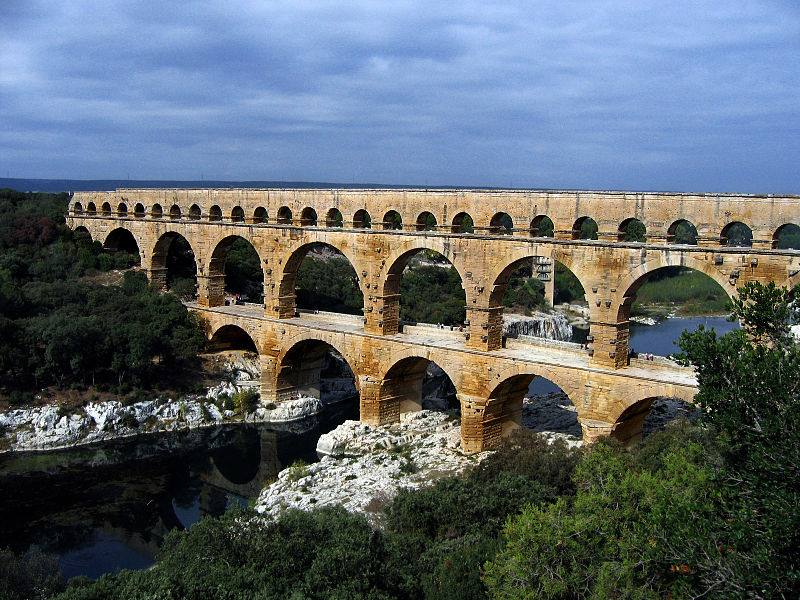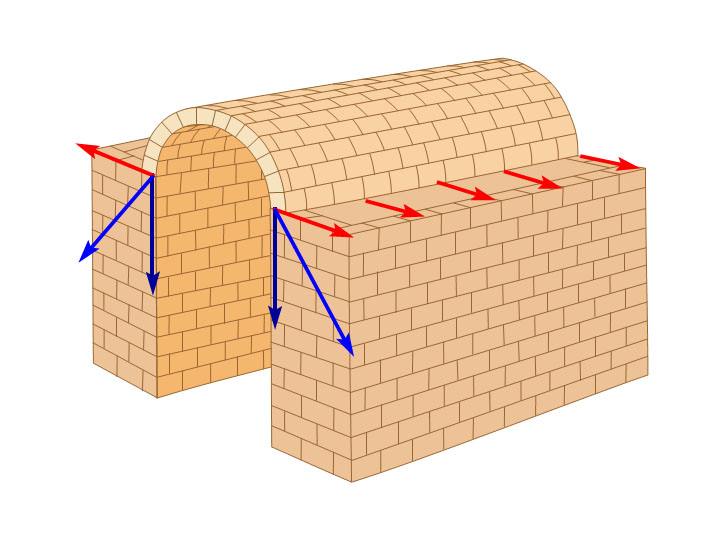Page 2
Stone Arches and Barrel Vaults
Stone arches are attributed to Romans that used this technique extensively to build homes, bridges, and aqueducts, figure 3. Corbelling and lintels dominated vault construction in pre-Roman times.

Figure 3. Roman aqueduct at Pont du Gard, France (source Wikipedia - Commons).
Romans advanced the technology of round stone vaulting with the use of concrete and the construction of monolith vaults such as at the Pantheon, an unreinforced concrete dome spanning 43 m. Much of this construction knowledge was lost following the fall of the Roman Empire.
Stone arch vaulting slowly reemerged in the early Middle Ages, in part as a fireproofing solution to timber vaults. Fitchen points out, for example, that the stone high vaults of the tall cathedrals also served as a fireproofing layer that isolated the timber-framed high roof. (Fitchen 1961, 42).
Inspired by Roman architecture, stone arch vaulting reached a characteristic form known as Romanesque, close to the millennium. Churches were built with long barrel vaults resting on heavy lateral walls (Fitchen 1961, 45).
Barrel vaults generate lateral thrusts, pushing out the walls on which they rest, figure 4. If the walls are not strong, heavy enough, the force of these thrusts dislodge the top of the walls, resulting in a collapse of the vault. This was the concern of ancient architects and builders dealing with stone vaulting. Without the modern knowledge and analytical tools to deal with the structural questions, ancient builders relied on experience and the study of classical buildings.

Figure 4. Large walls provide abutment for stone vault lateral trusts.
Making walls large and heavy counteracts effectively these lateral thrusts, as shown in figure 4; hence the origin of large walls as abutments for barrel vaults.
Retrospective studies of medieval cathedrals by contemporaries has shown that the analytics is quite complex even for modern science, accounting for the non-uniformity posed by grout joints and construction settlements. Numerical approaches follow different theories based on material elasticity, rigid bodies using limit analysis, etc. Fangary provides an overview of the various analytical approaches (Fangari, 29-37).
This meant that no major opening would be built into these walls, resulting in poorly illuminated interior spaces (Fitchen 1961, 45).

